- Home
- Keith Douglass
Afterburn c-7 Page 5
Afterburn c-7 Read online
Page 5
And there was something more.
He cocked an eye at Brandt. “Tell me the truth, Captain. Do you miss it now? The flying, I mean?”
“Every goddamn day of my life, Stoney, and that’s the truth.”
“That’s what I thought. Maybe all the grown-up responsibility isn’t such a great idea after all, huh?”
“Second thoughts, Tombstone?”
“I’m not sure, Captain. I just know I prefer blue sky to quarterdecks, and a Tomcat’s ejection seat to the captain’s chair on the bridge. Now, if you’ll excuse me, sir, I think I’d better get down to CATCC. With our planes up, it looks like I’m CAG again.”
“Well, son, thanks for keeping me company. Drop by anytime.”
“You know I will, Captain.”
“Oh, and Stoney?”
“Sir?”
“You tell your people to keep their Mark One eyeballs peeled up there.
Hawkeyes or no Hawkeyes, I trust their judgment and their instincts more than all the electronics between here and Silicon Valley.”
Tombstone grinned. He felt exactly the same way. “Aye, aye, sir!”
CHAPTER 4
Friday, 30 October
1735 hours (Zulu +3)
Carrier Air Traffic Control Center (CATCC), U.S.S. Thomas Jefferson
It was almost time for evening chow, but work aboard a Navy carrier continued nonstop, with no pause for food or sleep, often with a near-constant cycle of cat launches and recoveries carried out for hour after hour after grueling hour. Save for rare instances such as Jefferson’s recent transiting of the Bosporus, several aircraft were nearly always in the sky, especially in potential war zones like this; minimum air deployment at any given time for the Jefferson’s air wing was a couple of Tomcats on Combat Air Patrol, and at least one of the E-2C Hawkeyes. While the actual takeoffs and landings were controlled by the Jefferson’s Air Boss from his glass-enclosed domain high up on 0–8 deck known as Primary Flight Control, or Pri-Fly, aircraft already in the air were directed from the darkened room on 0–3 deck designated the Carrier Air Traffic Control Center. CATCC ― pronounced “cat-see” in the Navy’s language of acronyms and abbreviations ― was a dim-lit, magical world of computers, monitors, and complex communications systems overseen by a staff of the Navy’s most skilled high-tech wizards. Perhaps a dozen men occupied the consoles and radar display screens scattered about the room, while Lieutenant Fred Penhall, the duty officer in CATCC for this shift, surveyed his domain from the lordly throne of an elevated, leather-backed chair at the center of the compartment.
Tombstone was tired as he pushed aside the curtains that kept out the harsh light of the passageway outside and entered the room. He’d been going pretty much on adrenaline since the Jeff had entered the Hellespont the day before. Someone thrust a steaming mug of coffee ― his mug, inscribed “CAG-CVW-20” ― into his hands and he gave the sailor a brisk nod. Radio voices crackled from speakers on the bulkhead, terse and urgent.
“As you were, Lieutenant,” he rasped as Penhall started to rise from his chair. He took a sip from the mug. It was a particularly strong brew this evening, the much-concentrated remnants of a pot put on the hot plate a long time ago. “Just passing through. What’s the word?”
“We’re on line now with both the Shiloh and Hawk One, sir,” he replied.
The duty officer gestured toward one of the several large computer display situation boards commanding the entire compartment. Drawn in zigzagging lines of colored light, crowded with small and cryptic symbols, each tagged by strings of alphanumerics, it was a condensation of tactical and map data relayed from several sources ― in particular the Hawkeye’s APS-125 radar and the high-tech array of search and tracking radars that made up the Shiloh’s electronic sensor suite ― but it included data relayed to the CBG from other ships and aircraft and even from military satellites as well.
The scale at the moment revealed only a fraction of the display’s reach, out to about one hundred nautical miles from the Jefferson’s position. At a glance, Tombstone could see the Turkish coast running southwest to northeast some fifteen nautical miles south of the carrier. The Turkish port of Zonguldak was prominent there, ringed by the glowing icons representing air defense, tracking, and surface scan radar. The various far-scattered ships and aircraft of the battle group were marked in green, while yellow symbols represented identified Turkish radar contacts, mostly military forces shadowing the American force.
One red-lit target stood out on the map display with ominous clarity ― the last known position and track of the presumed Russian submarine following the Jefferson, closely shadowed by a green icon for the Orlando. Tombstone pointed at the submarines, which were being paced by two pairs of green aircraft. “I see you have our tail bracketed.”
Penhall grinned. “Sure do. The word just came through from Top Hat.
We’re gonna give him a concert. A rock concert.”
Top Hat, also known as Alpha Bravo, was the code name for Admiral Douglas E Tarrant, CO-CBG-14, who was currently running the operation from the Combat Direction Center aboard Shiloh. Those aircraft, according to the information appearing next to them on the display, were a pair of SH-60 Sea King ASW helos, part of Jefferson’s HS-19, plus two Vikings from VAW-42, the King Fishers. Though belonging to Jefferson’s contingent, the sub-hunters were operating under the direction of Shiloh’s CDC now, while the CATCC and Air Ops people aboard Jefferson simply listened in. The voices coming over the radio speaker were contact and vectoring information, for the most part, between the ASW aircraft and Shiloh’s CDC.
“Sounds like a plan to me,” Tombstone said, smiling. “If the guy’s a classical music lover, maybe he’ll give up and go home.”
Penhall laughed. “With luck, we’ll jangle his sonar and make his operators’ ears ring. They won’t be able to hear the Jef’s screws from ten meters off our stern.”
It was in many ways, Tombstone reflected, an operation similar to the Bear hunts he’d participated in when he’d been a Tomcat driver flying with VF-95. During the Cold War, the Soviets would routinely test an American carrier battle group’s readiness and alertness by vectoring one or more of their big long-range Tu-95 Bear-D reconnaissance planes toward the CBG. Just as routinely, F-14 Tomcats would deploy to meet the incoming Bears as far from the carrier as possible ― usually several hundred miles ― and force them to change course. The same mock-war feints, threats, and counters were part of the repertoire of the carrier’s antisubmarine units as well. The “concert” Penhall had mentioned would be a special, high-volume broadcast from the Sea Kings, using their powerful AQS-13 dipping sonars, set to active mode to ping the Victor III and let him know, in no uncertain terms, that he’d been spotted. And if the sub’s skipper refused to take the hint, firmer measures would be applied.
Tombstone continued studying the map display. “Let me see the Sustain Hope AO,” he told Penhall.
“Yes, sir. Markowitz! Punch up Sierra Two on the main display.”
“Aye, aye, sir.”
The map view shifted, showing now the eastern rim of the Black Sea. The scale changed as well, covering the entire east shoreline, running from the Turkish port at Hopa northwest all the way to Kerch at the extreme east tip of the Crimea and guarding the narrow straits into the Sea of Azov. Especially prominent was the small port city of Poti, on the Georgian coast fifty miles from Hopa and the Turkish border. A cluster of green icons lay thirty miles offshore, identified by the alphanumeric MEU-25.
Tombstone pursed his lips for a moment as he studied the display. The Marine Expeditionary Unit was not technically part of CBG-14 at all, though MEUS were attached to the battle group from time to time, depending on deployment and mission. This time, MEU-25 was operating under UN auspices as part of the Georgian relief program. With Operation Sustain Hope, the old question of U.S. forces serving under United Nations leadership had come to the forefront again and was rapidly proving to be a disaster.
MEU-25 c
onsisted of the LPD Little Rock, the LHA Saipan, and the LPH Guadalcanal, plus a small fleet of transports and escorts assigned to carry a reinforced Marine Battalion Landing Team anywhere in the world at short notice as a rapid-response peacekeeper force. The expeditionary unit had arrived in the Black Sea a few days before the Jefferson with orders from the National Command Authority ― meaning the President ― to open up a secure port at Poti in the former Soviet Republic of Georgia so that UN humanitarian aid could begin to flow into the war-ravaged little country lying on the southern slopes of the Caucasus Mountains.
It was supposed to be a routine operation ― routine, that is, save for the extraordinary fact that U.S. military force was being projected into this corner of the world for the first time in history. A British peacekeeping force under direct UN control was already on its way to take over, but as usual the U.S. Marines would bear the brunt of the initial operation.
It was all quite a tangle, Magruder reflected. Who would have thought, just a few years back, that when American troops stood on soil that had belonged to the Soviet Empire they’d be doing it as glorified security guards? Or that in the end Russia and her former satellites would turn into just so many more Third World hot spots where the UN formula of humanitarian aid, peacekeepers, and no-fly zones would be applied the very same way it had been in Iraq, and Bosnia, and Haiti, and Macedonia?
But the world was changing fast, sometimes so fast that it almost seemed to out-pace American foreign policy itself.
The Republic of Georgia was mirror to the drama that was being played throughout this part of the world now and for most of the past decade. Once a federated S.S.R., Georgia had declared its independence from the old Soviet Union on April 9, 1991. Even as the nation fought for freedom, however, the autonomous provinces of Abkhazia, Adharia, and South Ossetia were fighting for independence from Georgia. By 1994, Georgia’s President Shevardnadze had agreed to a cooperation pact that increased Russian military influence in the country, a frank exchange of freedom for security, and Georgia joined the Moscow-led Commonwealth of Independent States soon after. By the time the Soviet Union was briefly reborn and the tanks had been rolling into Norway, Georgia was again solidly under Russian control.
But then the Scandinavian campaign had collapsed, the Russian military had been proven a hollow shell, and American forces were landing on the once sacrosanct soil of the Kola Peninsula. Leonov and Krasilnikov were battling one another in the streets of Moscow and a hundred other Russian cities, and the entire nation was sliding relentlessly toward the yawning chasm of total anarchy. States that had enjoyed a brief freedom in the era of Gorbachev and Yeltsin, states like Ukraine and Belarus, the Baltics and Georgia, were shaking off the neo-Soviet mantle and reasserting their independence. In one ex-Soviet state after another, popular uprisings were driving out garrisons weak enough or discouraged enough to give way.
But independence is never cheap. There were still plenty of neo-Soviet units scattered across the length and breadth of the former empire, controlled by hard-liner Reds and pro-Krasilnikov factions, and the fledgling rebel movements were rarely strong enough to break the militarists’ control by themselves. One after another of the newborn governments had applied to the United Nations for support; at the same time, the UN was trying to keep up with the spreading chaos by inserting peacekeepers and taking steps to ensure the delivery of humanitarian relief as the dreaded Russian winter loomed near.
In Washington, the President had agreed to honor the UN Secretary General’s request and ordered MEU-25 and CBG-14 into the Black Sea, once it became certain that Turkey was not going to permit foreign military forces to be based on their soil.
On paper, Operation Sustain Hope seemed no more outlandish a proposal than had Operation Restore Hope, the abortive and expensive Marine operation ― again at the UN’s behest ― in Somalia in 1992 to 1994. The National Command Authority had been specific in its directive: Under no circumstances would U.S. involve themselves in the fighting between the Red and Blue Russian factions. The Marines would go ashore at Poti only after a UN Crisis Assessment Team could demonstrate that both the Reds and the Blues were out of the picture in Georgia, leaving the way clear for the Georgian Freedom Party to cooperate with the UN mission. If and when the CAT gave the go-ahead, Marines would start going ashore, securing port and airfield facilities in and around Poti so that relief supplies could begin arriving by ship and plane.
Meanwhile, the Jefferson battle group’s aircraft would impose a UN-dictated no-fly zone over western Georgia. By stopping all air traffic within a triangle marked out by the cities of Batumi and Sukhumi on the coast, and Kutasisi, about fifty miles inland from Poti, a fragile peace might be eked out among the warring tribes and factions; if it worked in western Georgia, the UN sanctions would be extended, taking in all of Georgia and the neighboring states of Armenia and Azerbaijan as well. That region was still a running sore in this part of the world, and a successfully enforced UN-mandated peace there would go a long way toward legitimizing the notion of a United Nations with teeth.
The UN also hoped to use a strong military presence to defuse other problems in the area as well. Turkey had threatened more than once to invade former Soviet Armenia in order to quell the restlessness of its own Armenian population and the threat of a single Armenian state carved from both sides of the border; Iran, too, was a regional wild card, with troops poised on the Iranian-Azerbaijani border threatening to intervene in that country as well.
It was enough to give anyone one hell of a headache.
“Have there been any threats to Twenty-five?” Tombstone asked Penhall.
“No direct threats,” the lieutenant replied. “A number of radar sites all along the coast have been keeping tabs on them, of course, but no weapons radar signatures, and nothing that could be interpreted as a hostile move. Yet.”
That final word was offered as an afterthought, and Tombstone nodded understanding. No one in this part of the world really wanted them here in these waters, and all parties concerned would be very glad to see the Americans leave.
And that goes for me, too, Tombstone thought. He pointed to a cluster of yellow symbols over the Black Sea, south of Kerch and the straits leading to the Sea of Azov. “And who are those guys?”
“They’ve been IDED as another military flight out of Krasnodar,” Penhall said. “Reinforcements for Sevastopol, I expect.”
“I think,” Tombstone said slowly, “that the Crimea is going to sink if they pile anything more in there.”
Penhall smiled. “What was it the Russian general said about Stalingrad, sir, back in World War II? That it was one big prison camp?”
“I’m not sure the Russians said that,” Tombstone replied, “but I take your point.”
The ongoing war between Russia and Ukraine was what made the American incursion into the Black Sea particularly dangerous. More so than even the civil war between Blues and Reds, the Russo-Ukrainian War carried with it the seeds of a general conflict throughout this part of the world, one that might well spill over into both Europe and the Middle East.
It had, in fact, all of the makings of a new world war.
“Top Hat, Top Hat,” a radio voice called from a nearby speaker, carrying more urgency now. Tombstone cocked his head, listening, as Penhall switched the map display back to a view centered on the Jefferson. “This is Sierra One-five. We’re over the target area at seven-five feet and we’re trolling for big ones, over.”
“Ah, roger that, Sierra One-five. Commence active sonar.”
“And a one, and a two…”
The sonar pings weren’t transmitted over the open communications channel, but Tombstone could imagine what it must sound like aboard the Russian sub. That SH-3 was hovering just above the sub’s location, its sonar dangling at the end of a long cable, dipping beneath the surface of the water like bait on the end of a line. When the sonar started broadcasting ― ”going active,” as opposed to passively listening ― every man ab
oard the sub would hear it as a sharp, ringing chirp transmitted through the bulkheads of their tiny, enclosed world, proof positive that they’d been spotted and were in someone’s gun sights.
“Any idea yet whose sub that is?” Tombstone asked.
“Not really,” Penhall replied. “Our best guess is that it’s Russian.
The signature matches a Victor III that’s been operating out of their sub pens at Balaklava for some time now. It’s not conclusive, but…” He shrugged.
“Understood. Hardly matters, anyway. Nobody out here likes us much.”
“They might like us even less after this,” Penhall said. “We’re telling them, in effect, “Go away!’ Not exactly neighborly, you know?”
“More neighborly than an ADCAP torpedo,” Tombstone said. He hesitated, watching the unmoving graphics symbols, green and red, on the screen. He grinned. “Wonder how they’re enjoying the concert down there?”
1757 hours (Zulu +3)
Control room, Russian Submarine Kislovodsk
Ping!…
Scowling, Captain First Rank Aleksci Aleksandrovich Vyatkin looked up toward the control room’s overhead, past the maze of conduits, wirings, and piping that ran fore-and-aft through the compartment like a writhing bundle of spaghetti.

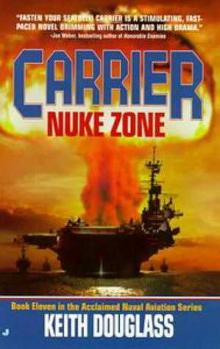 Nuke Zone c-11
Nuke Zone c-11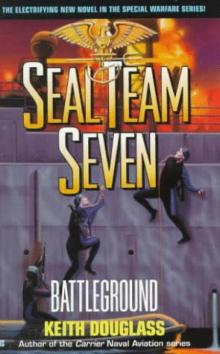 Seal Team Seven 6 - Battleground
Seal Team Seven 6 - Battleground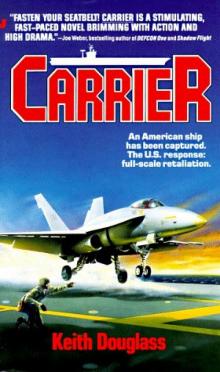 Carrier c-1
Carrier c-1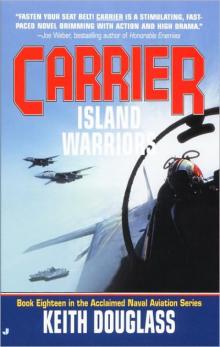 Island Warriors c-18
Island Warriors c-18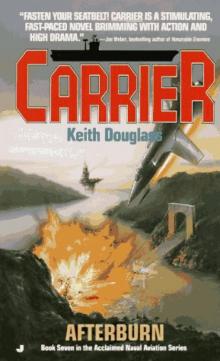 Afterburn c-7
Afterburn c-7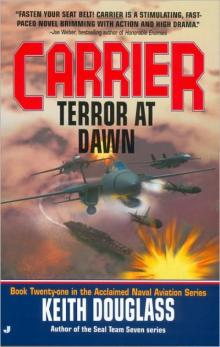 Terror At Dawn c-21
Terror At Dawn c-21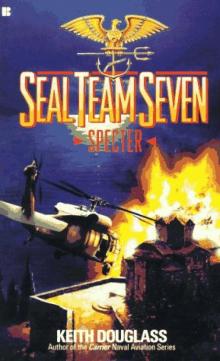 Specter sts-2
Specter sts-2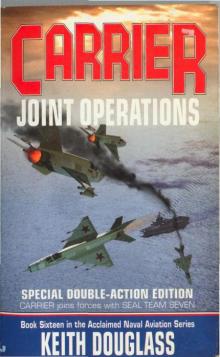 Joint Operations c-16
Joint Operations c-16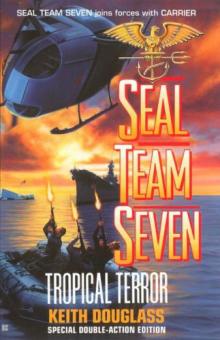 Tropical Terror sts-12
Tropical Terror sts-12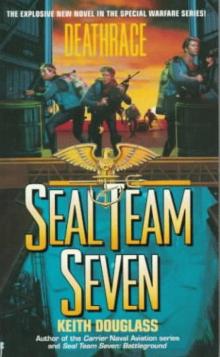 Seal Team Seven 7 - Deathrace
Seal Team Seven 7 - Deathrace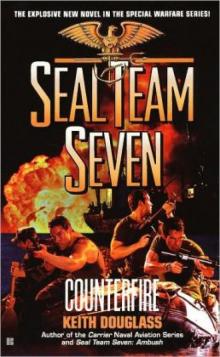 Counterfire sts-16
Counterfire sts-16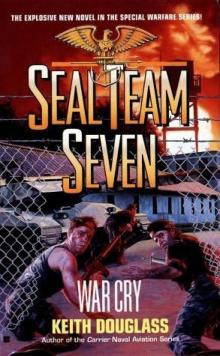 War Cry sts-9
War Cry sts-9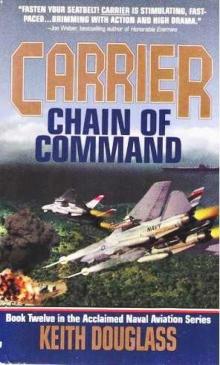 Chain of Command c-12
Chain of Command c-12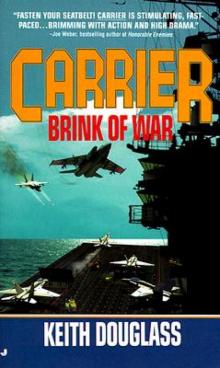 Brink of War c-13
Brink of War c-13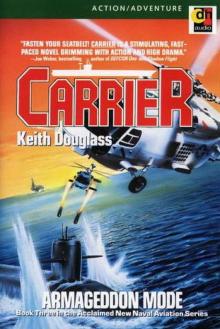 Armageddon Mode c-3
Armageddon Mode c-3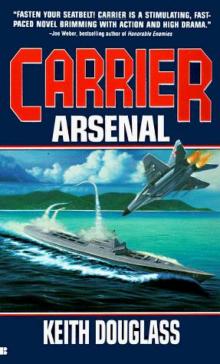 Arsenal c-10
Arsenal c-10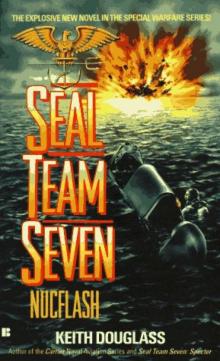 Nucflash sts-3
Nucflash sts-3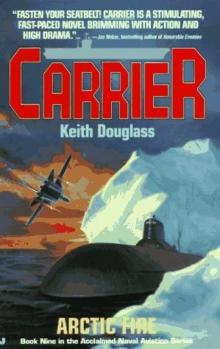 Arctic Fire c-9
Arctic Fire c-9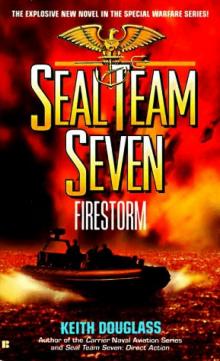 Firestorm sts-5
Firestorm sts-5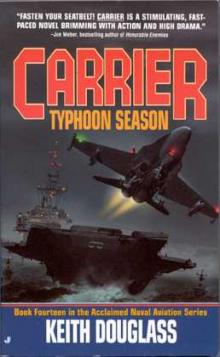 Typhoon Season c-14
Typhoon Season c-14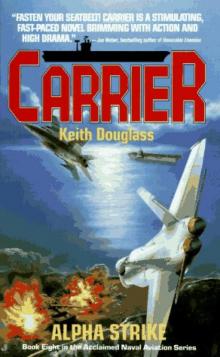 Alpha Strike c-8
Alpha Strike c-8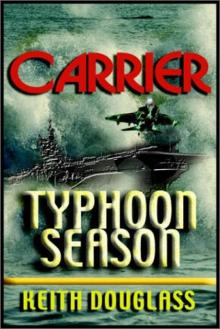 Carrier 14 - TYPHOON SEASON
Carrier 14 - TYPHOON SEASON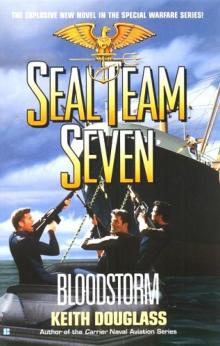 Bloodstorm sts-13
Bloodstorm sts-13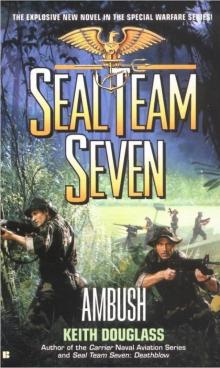 Ambush sts-15
Ambush sts-15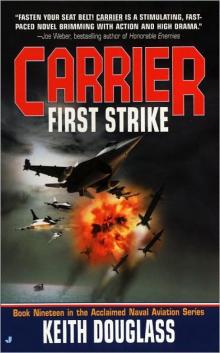 First Strike c-19
First Strike c-19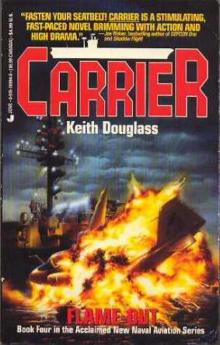 Flame Out c-4
Flame Out c-4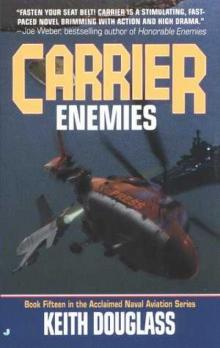 Enemies c-15
Enemies c-15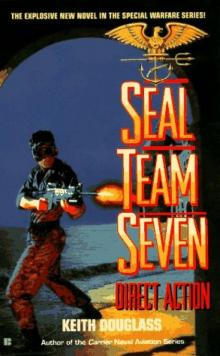 Seal Team Seven 04 - Direct Action
Seal Team Seven 04 - Direct Action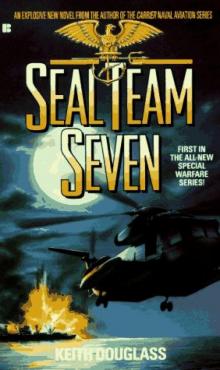 Seal Team Seven 01 - Seal Team Seven
Seal Team Seven 01 - Seal Team Seven Payback sts-17
Payback sts-17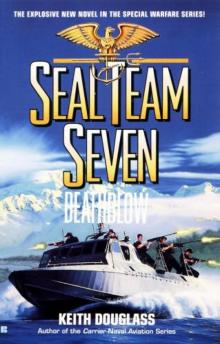 Death Blow sts-14
Death Blow sts-14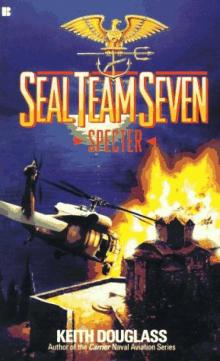 Seal Team Seven 02 - Spector
Seal Team Seven 02 - Spector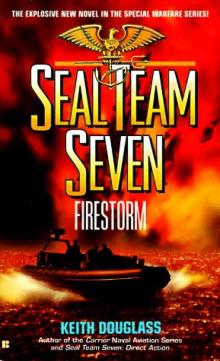 Seal Team Seven 5 - Firestorm
Seal Team Seven 5 - Firestorm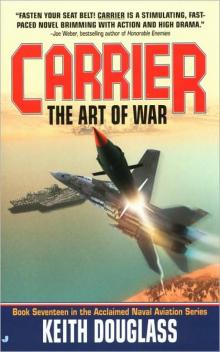 The Art of War c-17
The Art of War c-17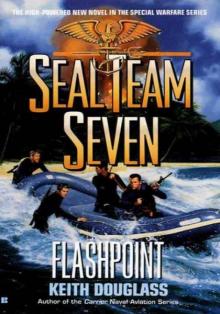 Flashpoint sts-11
Flashpoint sts-11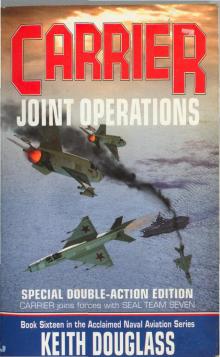 Carrier - Joint Operation Book 16
Carrier - Joint Operation Book 16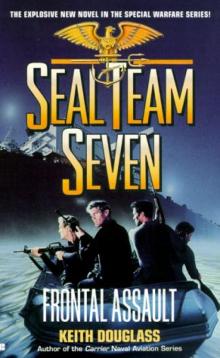 Frontal Assault sts-10
Frontal Assault sts-10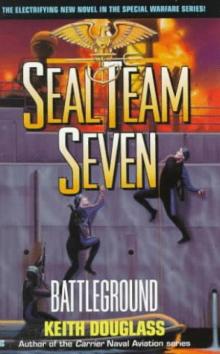 Battleground sts-6
Battleground sts-6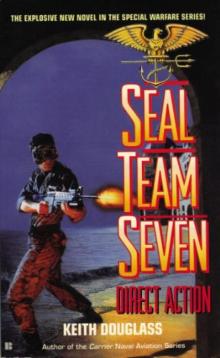 Direct Action sts-4
Direct Action sts-4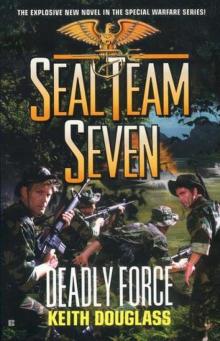 Deadly Force sts-18
Deadly Force sts-18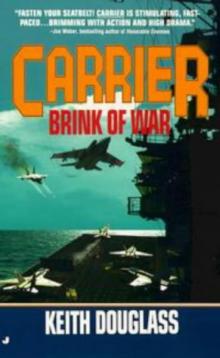 Carrier 13 - Brink of War
Carrier 13 - Brink of War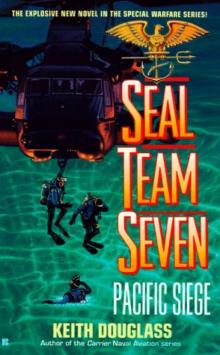 Pacific Siege sts-8
Pacific Siege sts-8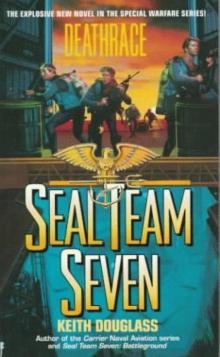 Deathrace sts-7
Deathrace sts-7